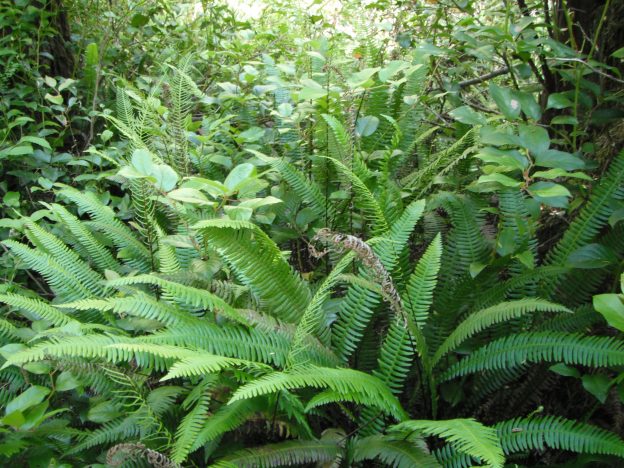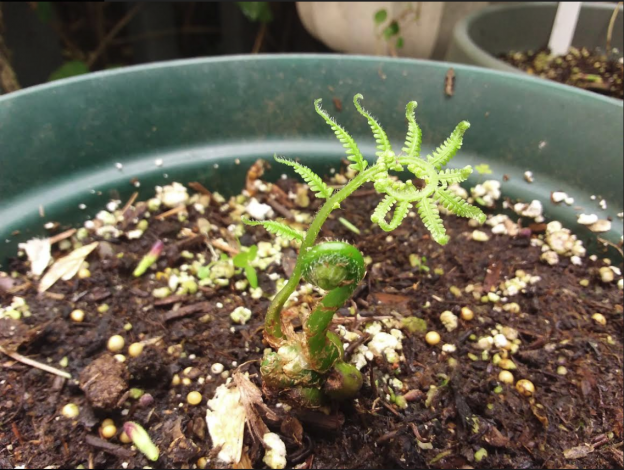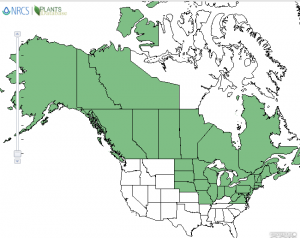Deer Fern Chain Fern family–Blechnaceae
Blechnum spicant (L.) Sm.
(BLEK-num SPEE-kant)
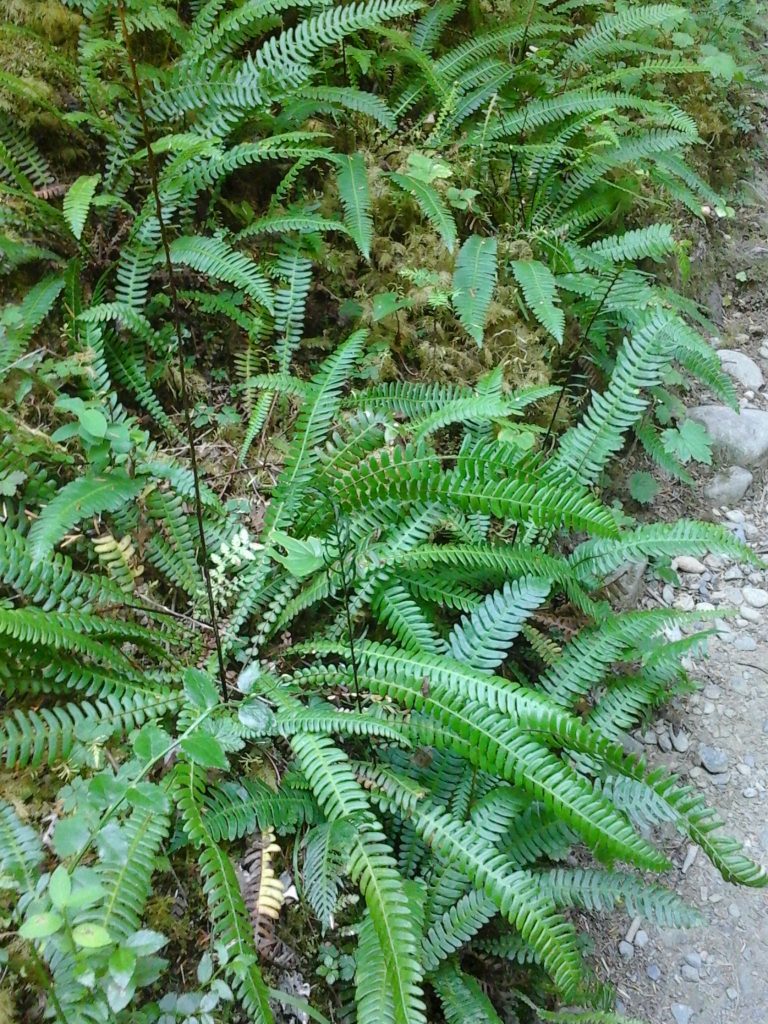 Names: Blechnum comes from a general Greek name for fern. Spicant means spiked referring to the erect fertile fronds. Other common names include: Hard Fern or Rough Spleenwort. It also has been known as Struthiopteris spicant.
Names: Blechnum comes from a general Greek name for fern. Spicant means spiked referring to the erect fertile fronds. Other common names include: Hard Fern or Rough Spleenwort. It also has been known as Struthiopteris spicant.
Relationships: There are about 150-220 species of Blechnum (generally known as Hard Ferns or Midsorus Ferns) throughout the world, most are from tropical regions in the southern hemisphere, with just a few in the temperate regions of both hemispheres. This genus spans the globe from the southern-most fern species, B. penna-marina, from Cape Horn to arctic regions in Iceland and Norway. A few Ecuadorean species reach tree stature growing up to 3 meters tall. Only two other species occur in the mainland United States (in the Gulf States & Florida)—these and 5 additional species also occur in Puerto Rico.
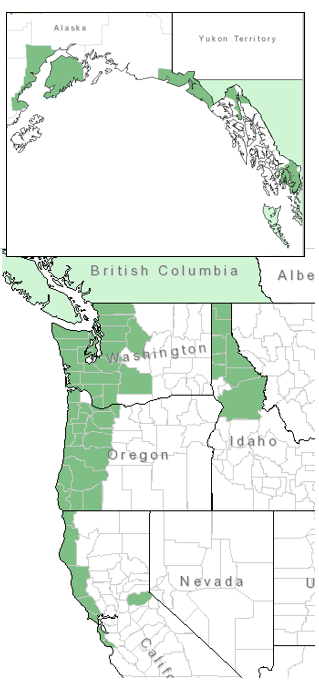
Distribution of Deer Fern from USDA Plants Database
Distribution: Deer Fern is found in Europe, northern Asia, Japan and in western North America from southern Alaska to the central California coast; mostly west of the Cascades, but it also is reaches east to the Idaho panhandle.
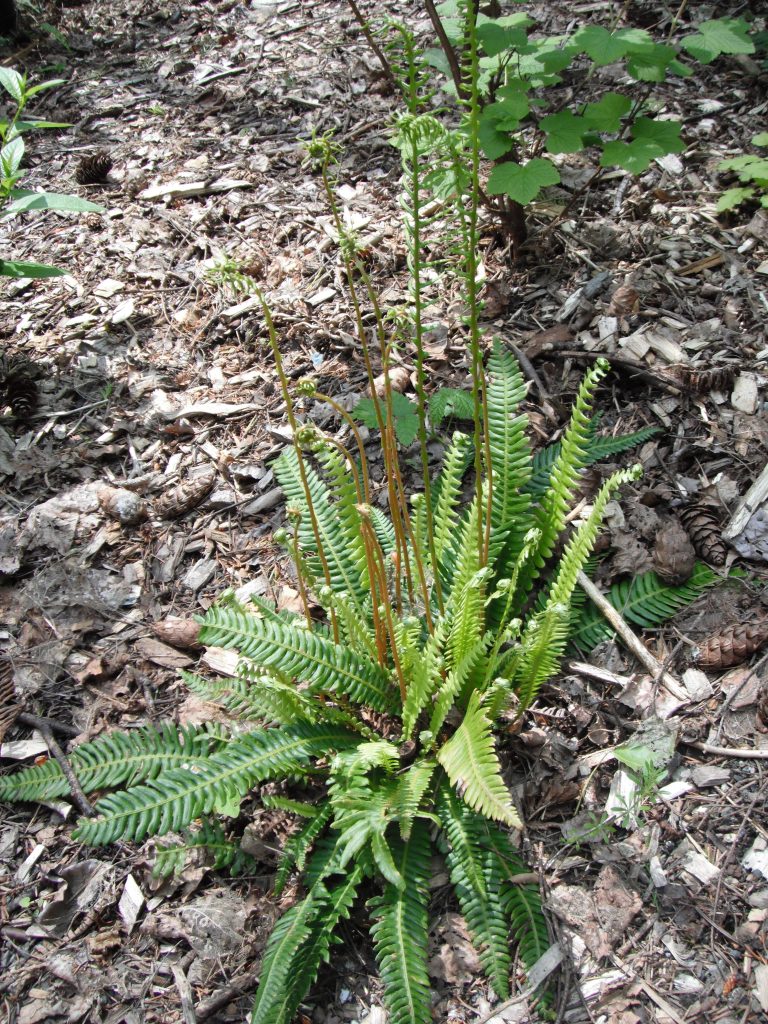
Fertile fronds emerging vertically from the center of the more horizontal sterile fronds.
Diagnostic Characters: Deer fern has two types of fronds: narrow, evergreen, once-pinnate (or deeply lobed), sterile leaves spread outward, growing 10-80 cm long; even narrower, taller (1-3 feet), fertile fronds grow erect, from the center, soon withering after spore dispersal. The once-pinnate leaflets on the fertile fronds are much narrower and roll almost tube-like around the continuous sori. Leaf stalks are a dark, purplish-brown, and grow from a short, thick rhizome.
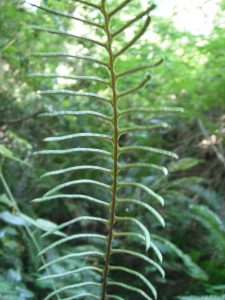
Fertile fronds have edges that are rolled under.
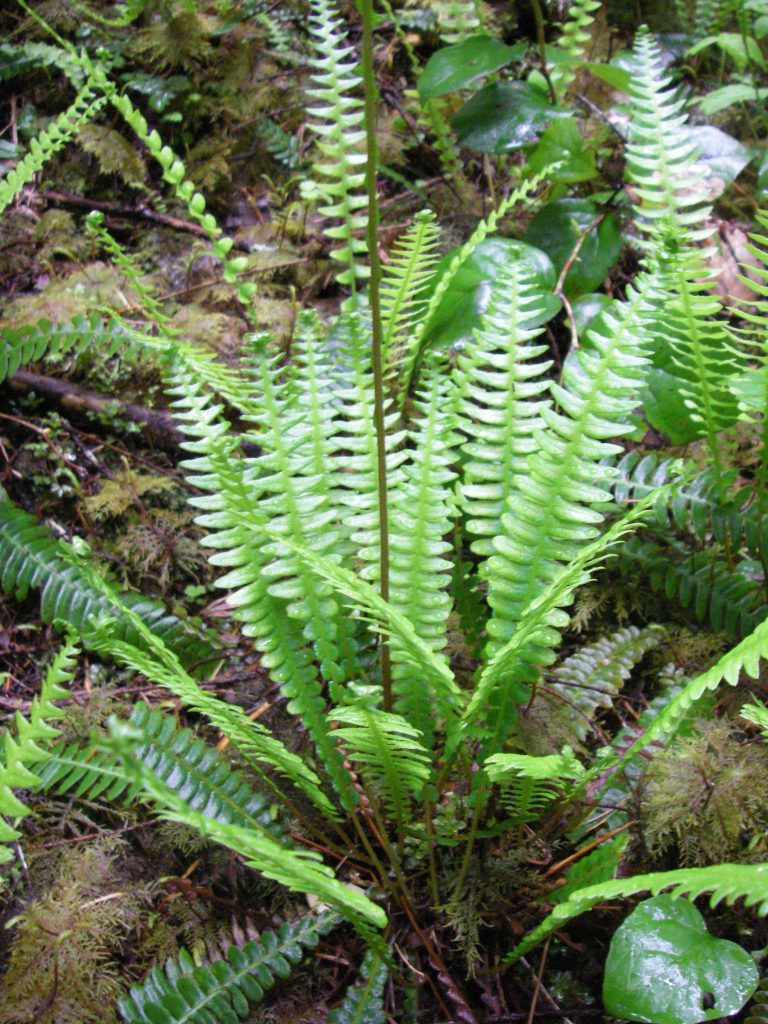
Habitat: This species grows best in moist to wet forests and along streambanks. Wetland designation: FAC+, Facultative, it is equally likely to occur in wetlands or non-wetlands.
In the Landscape: Hitchcock writes: Deer Fern “is a truly choice fern usable in many places in the garden, but so common as to have little appeal to most gardeners.” That said, it is one of the best native ferns for landscapes, second only to Sword Fern. Although at home in a woodland garden, it can adapt to many situations, given adequate shade and/or moisture. Deer Fern has also been used as a houseplant.
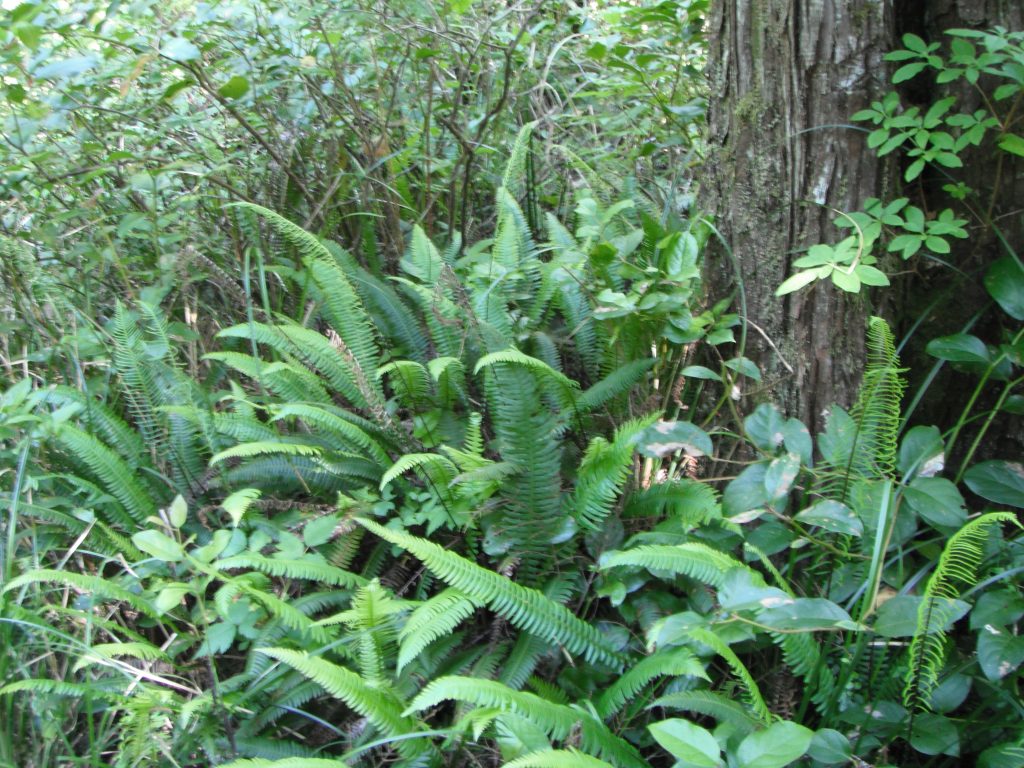
Use by People: The roots and young shoots were cooked and eaten as an emergency food; the young tender stems can also be peeled and the center portion eaten to relieve hunger; the leaves eaten to prevent thirst. The leaflets have been chewed to treat cancer, lung disorders and stomach problems; and a decoction of the root to treat diarrhea. The leaves were used medicinally on skin sores, which is said to have been learned by watching deer rub their antler stubs in this plant. The fronds were also used to line pits for baking camas (along with Sword Fern) and have been used for bedding.
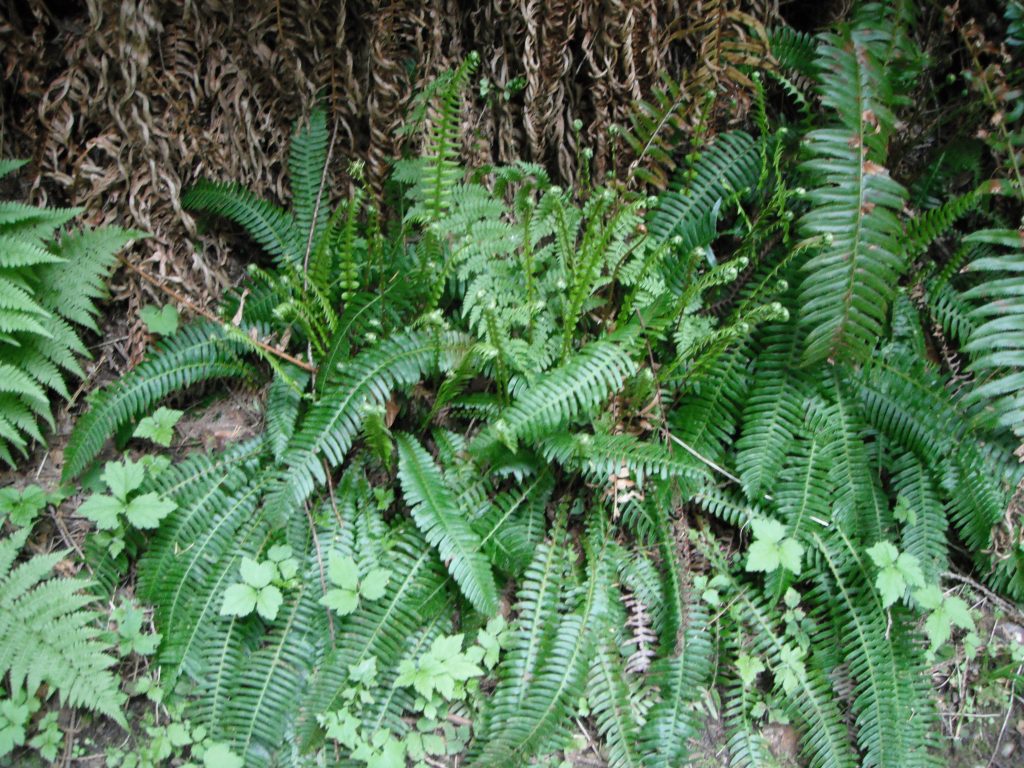
Use by wildlife: Deer fern provides valuable forage for deer, Mountain Goat, Bighorn Sheep, elk, moose, and caribou.
Links:
Consortium of Pacific Northwest Herbaria
WTU Herbarium Image Collection, Plants of Washington, Burke Museum
E-Flora BC, Electronic Atlas of the Flora of British Columbia
Jepson Eflora, University of California
Ladybird Johnson Wildflower Center
USDA Forest Service-Fire Effects Information System
Native American Ethnobotany, University of Michigan, Dearborn

